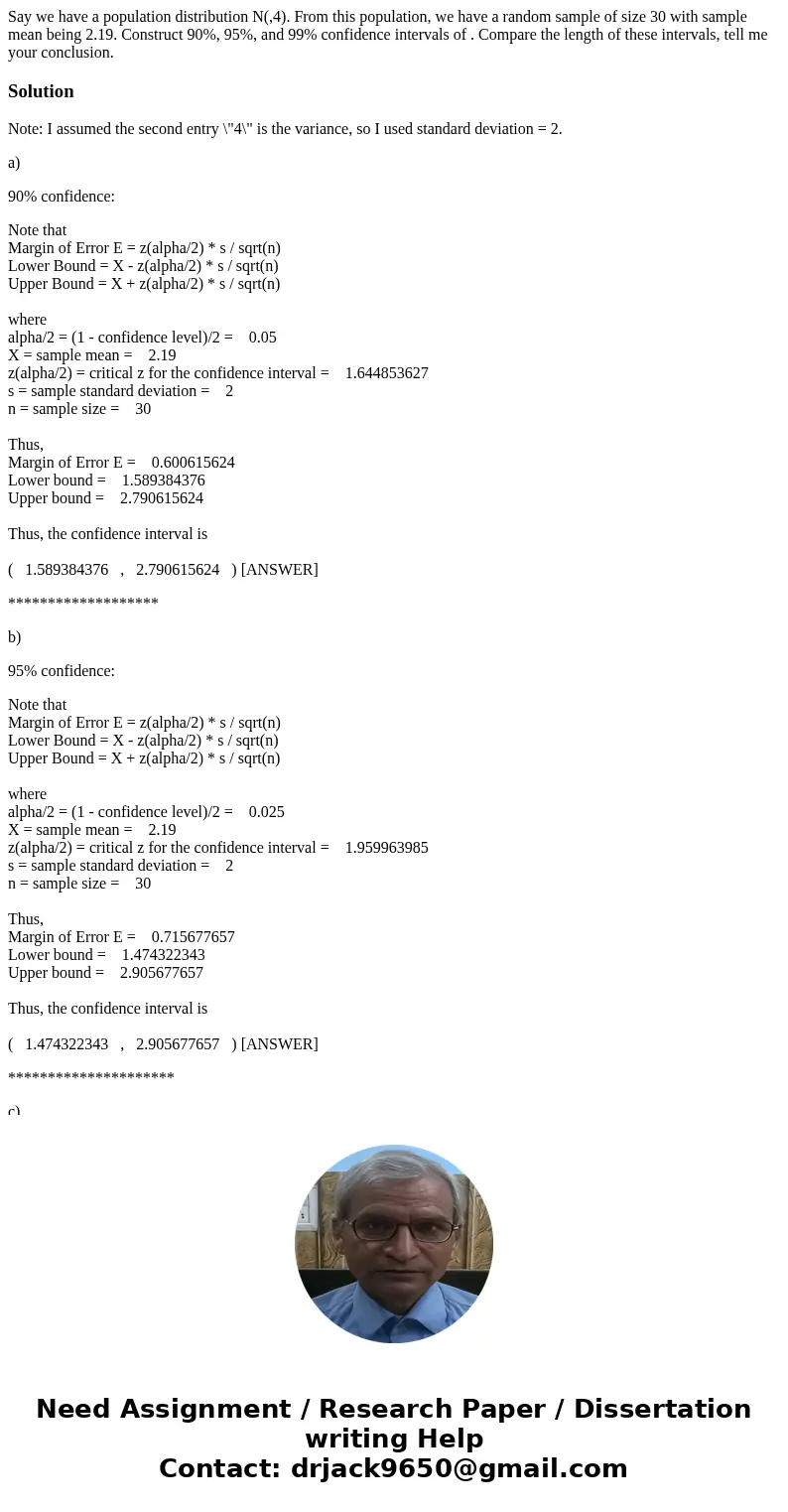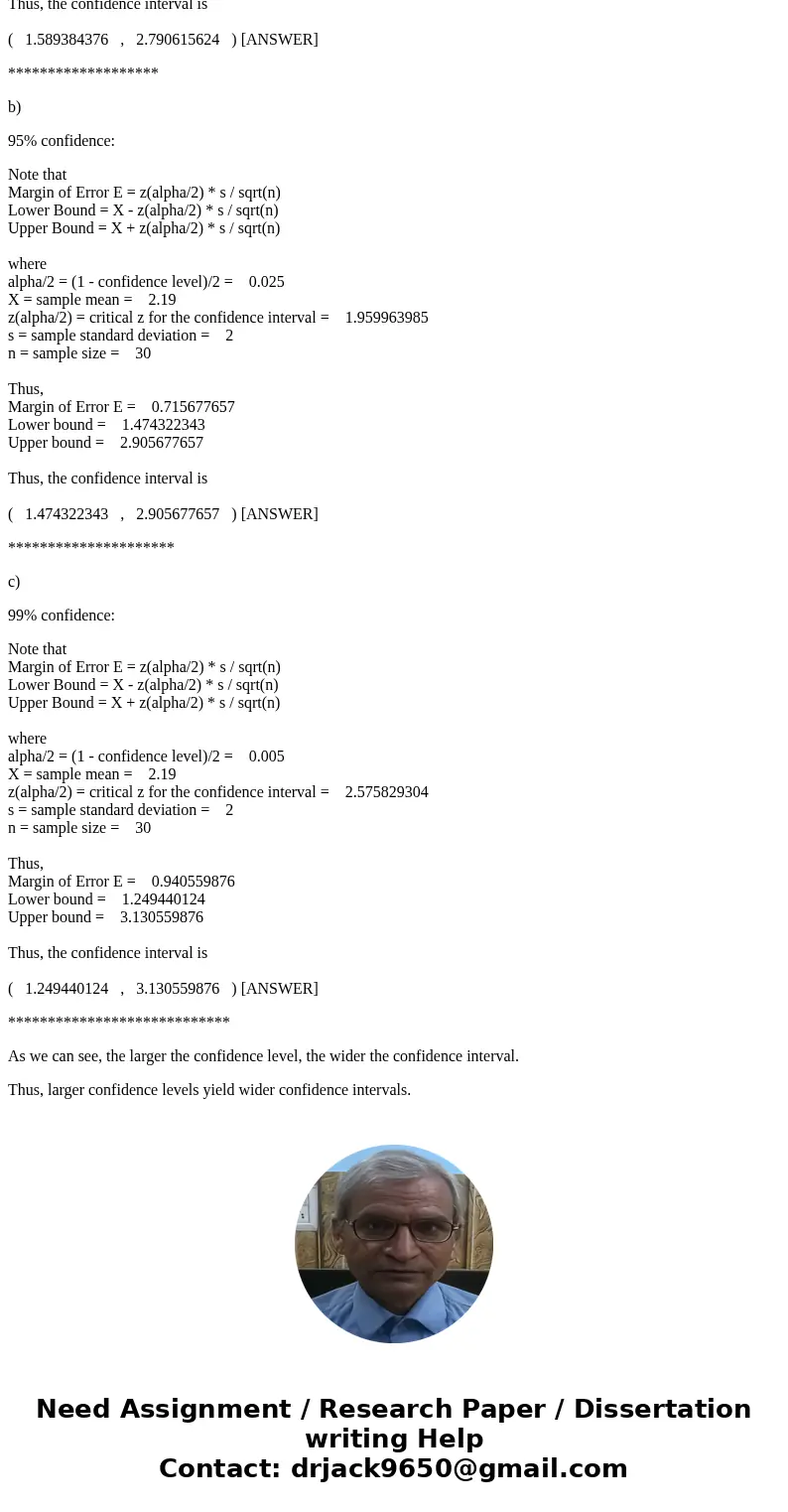Say we have a population distribution N4 From this populatio
Say we have a population distribution N(,4). From this population, we have a random sample of size 30 with sample mean being 2.19. Construct 90%, 95%, and 99% confidence intervals of . Compare the length of these intervals, tell me your conclusion.
Solution
Note: I assumed the second entry \"4\" is the variance, so I used standard deviation = 2.
a)
90% confidence:
Note that
Margin of Error E = z(alpha/2) * s / sqrt(n)
Lower Bound = X - z(alpha/2) * s / sqrt(n)
Upper Bound = X + z(alpha/2) * s / sqrt(n)
where
alpha/2 = (1 - confidence level)/2 = 0.05
X = sample mean = 2.19
z(alpha/2) = critical z for the confidence interval = 1.644853627
s = sample standard deviation = 2
n = sample size = 30
Thus,
Margin of Error E = 0.600615624
Lower bound = 1.589384376
Upper bound = 2.790615624
Thus, the confidence interval is
( 1.589384376 , 2.790615624 ) [ANSWER]
*******************
b)
95% confidence:
Note that
Margin of Error E = z(alpha/2) * s / sqrt(n)
Lower Bound = X - z(alpha/2) * s / sqrt(n)
Upper Bound = X + z(alpha/2) * s / sqrt(n)
where
alpha/2 = (1 - confidence level)/2 = 0.025
X = sample mean = 2.19
z(alpha/2) = critical z for the confidence interval = 1.959963985
s = sample standard deviation = 2
n = sample size = 30
Thus,
Margin of Error E = 0.715677657
Lower bound = 1.474322343
Upper bound = 2.905677657
Thus, the confidence interval is
( 1.474322343 , 2.905677657 ) [ANSWER]
*********************
c)
99% confidence:
Note that
Margin of Error E = z(alpha/2) * s / sqrt(n)
Lower Bound = X - z(alpha/2) * s / sqrt(n)
Upper Bound = X + z(alpha/2) * s / sqrt(n)
where
alpha/2 = (1 - confidence level)/2 = 0.005
X = sample mean = 2.19
z(alpha/2) = critical z for the confidence interval = 2.575829304
s = sample standard deviation = 2
n = sample size = 30
Thus,
Margin of Error E = 0.940559876
Lower bound = 1.249440124
Upper bound = 3.130559876
Thus, the confidence interval is
( 1.249440124 , 3.130559876 ) [ANSWER]
****************************
As we can see, the larger the confidence level, the wider the confidence interval.
Thus, larger confidence levels yield wider confidence intervals.


 Homework Sourse
Homework Sourse